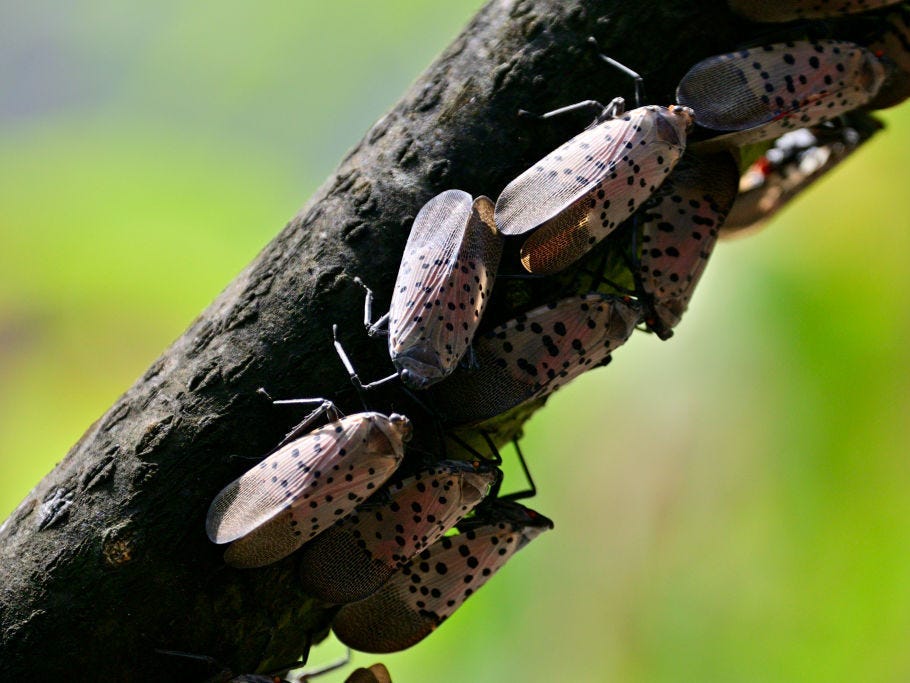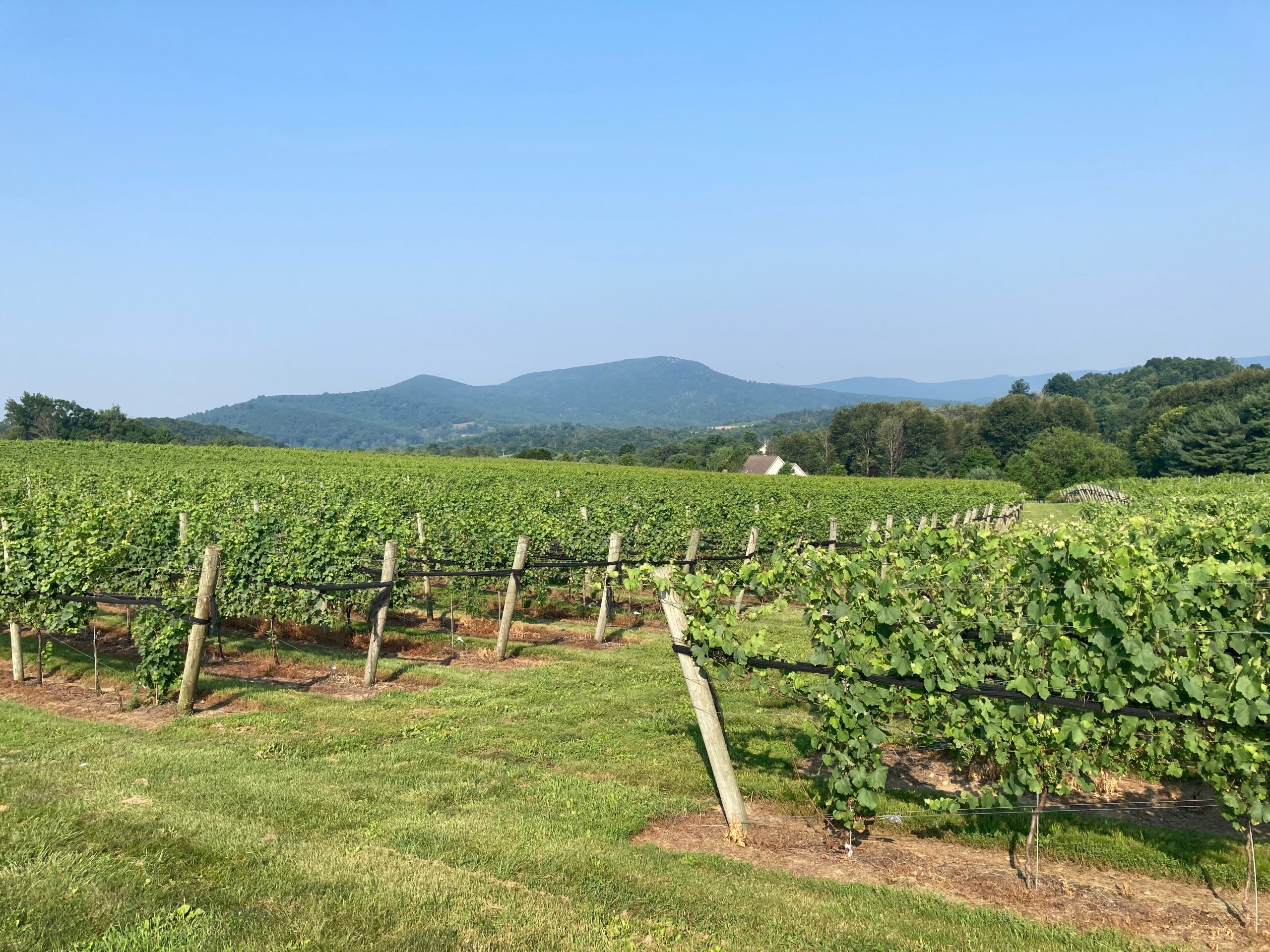
Bastiaan Slabbers/NurPhoto via Getty
- Lanternflies are devouring vineyards and alarming winemakers as they spread through the country.
- They're a nuisance for homeowners since they eat certain plants, crawl on people, and defecate everywhere.
- States have even quarantined certain lanternfly-infested counties to stop the invasive species' spread.
- See more stories on Insider's business page.
The first thing Amy Korman notices about the trees blanketed with thousands of lanternflies is the sour, putrid stink. The bugs also squirt out honeydew – a sugary, translucent excrement that falls into her hair and which she can hear hitting the leaves like rain.
An infestation like this isn't rare anymore, Korman, an entomologist at Pennsylvania State University, said.
"Lanternflies are getting worse in geographic distribution," she said. "Every year there are more."
In Pennsylvania, a state at the heart of the lanternfly outbreak and the fifth largest wine-producing region in the country, the bugs' voracious appetite for grapevines has wreaked havoc on vineyards, and winemakers in the region have had to dig deep into their pockets to kill the bugs occupying acres of their fields.
"They're a big threat," Richard Wooley, the owner of Weathered Vineyards & Winery, said. "They're little Draculas. I call them that because they come in and suck the life right out of the vine."
The bugs slurp sap out of grapevines with their straw-like mouth, a diet that prevents the fruit from fully ripening and steals the source of energy the plants need to survive the winter. The bugs can grow up to an inch long and a half-inch wide and are usually marked by patches of red and black.
On top of the 50,000 lanternflies he estimates are currently feeding in his field, others are flying and hopping around his house, his car, and his outdoor tasting room, where he occasionally hears screams when an insect lands on an unsuspecting guest.
"They're a pain in the ass," he said.
His vineyard is close to ground zero of the lanternfly outbreak in Berks County, Pennsylvania, where lanternflies were first discovered in the US, likely after a mass of the insects' eggs hitchhiked in on a shipment of stones from Asia, George Hamilton, chair of the entomology department at Rutgers University, told Insider.
As with other invasive species, the lanternfly's natural enemy didn't follow the insect across the ocean, allowing the bugs to multiply unchecked by other insects. Now, they've exploded to at least 11 states, mostly in the Northeast and Midwest.
In Larry Shrawder's lush vineyard at the foothills of the Appalachian Mountains, the millions of bugs fluttering around his fields cost $50,000 a year to treat with pesticides, which eats up about 10-15% of his yearly revenue.

Courtesy of Larry Shrawder
At one point, the lanternflies destroyed a sixth of his vineyard, with the plants' doom marked by a thick cover of the bugs around the vines followed by yellowing leaves before finally succumbing to the winter.
While the insects can be devastating for winemakers, they're also a nuisance in residential areas.
Korman has recieved panicked calls about lanternflies carpeting the sides of buildings and swarming birthday parties. They feed on over 70 plant species, including some commonly found in gardens, like maple trees, cucumbers, and basil. They also defecate on everything from patios to kid's toys.
The bugs' brazen destructiveness has also spawned a wave of hatred in affected states, with officials in some states even actively encouraging people to kill the bugs.
Though the insects can fly and jump, they mostly travel to new areas by hitching rides on cars and trucks. The insects lay eggs on flat surfaces, such as the sides of cars, and since the gray or white egg masses usually aren't longer than a couple inches, people often unwittingly transport the insects to new areas.
Though governments in states like Pennsylvania and New Jersey have issued quarantines for lanternfly-infested counties and have ordered travelers to check their vehicles for egg masses before traveling into non-quarantined areas, Hamilton said the problem will get worse before it gets better.
Hamilton anticipates that the bugs' explosion will peter out once a predator in the US realizes that the lanternflies are a source of food.
With the lanternflies' spread seemingly inevitable, Shrawder is taking calls with winemakers from as far away as Colorado, all worried about the next place lanternflies will invade and looking for a way to deal with them.
After learning from experience and new research from nearby universities, Pennsylvania vineyard owners know how to control the lanternflies better than they did a few years ago, Shrawder said.
"I think it's something we're all going to learn to live with," he said. "But there's always anxiety from something new feeding on your livelihood.